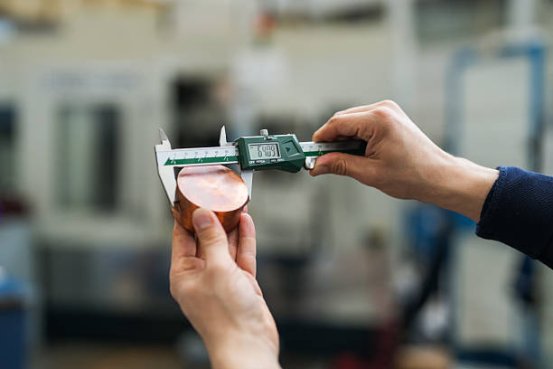Metal Marvels: Exploring the Advancements in Metallurgical Testing Systems
Metallurgical testing is a cornerstone of quality assurance, ensuring metals meet performance, safety, and durability standards across industries like aerospace, automotive, and construction. These systems provide essential insights that guide engineering, design, and regulatory compliance.
Metallurgical testing is a cornerstone of quality assurance, ensuring metals meet performance, safety, and durability standards across industries like aerospace, automotive, and construction. These systems provide essential insights that guide engineering, design, and regulatory compliance.

Understanding Metallurgical Testing
1. Significance of Metallurgical Testing
Metallurgical testing evaluates metals’ physical and chemical properties to confirm adherence to strict standards. This ensures product reliability, prevents failures, and maintains safety in critical applications, from aircraft to infrastructure.
2. Industrial Applications
Across manufacturing, construction, and automotive sectors, metallurgical testing informs material selection, predicts long-term performance, and ensures regulatory compliance, enabling companies to make data-driven decisions.
Core Components of Metallurgical Testing Systems
A comprehensive metallurgical testing setup incorporates specialized instruments and techniques for material assessment. Systems often include spectrometers, tensile testing machines, polishing units, and other laboratory equipment designed for precise and repeatable analysis.
Key Types of Testing and Equipment
1. Spectrometers
Spectrometers measure the elemental composition of metals, particularly stainless steel and alloys, ensuring consistent quality and guiding selection decisions for production processes.
2. Metallurgical Analysis
Techniques such as microscopy, hardness testing, and microstructural evaluation provide insights into strength, ductility, wear resistance, and other critical material characteristics.
3. Polishing Machines
Polishing machines prepare samples for detailed examination, producing smooth, reflective surfaces that enable precise identification of structural imperfections and microfeatures.
4. Laboratory Equipment
Modern labs may include microscopes, furnaces, and hardness testers, all contributing to a full spectrum of metal characterization capabilities.
5. Tensile Testing Machines
Tensile testers apply controlled forces to measure elasticity, strength, and deformation limits, providing essential data for product design and safety assurance.
6. Metallurgical Accounting
Tracking material flow and usage helps optimize production efficiency, reduce waste, and maintain accurate records for compliance and resource management.
7. Metallurgical Testing Services
Specialized labs deliver in-depth evaluations for quality control, research, and certification, assisting businesses in maintaining high standards and improving material performance.
8. Quality Control Measures
Continuous testing ensures metals meet required specifications, with deviations addressed promptly through corrective actions, reinforcing reliability across production lines.
Role of Metallurgical Testing Labs
1. Local Testing Facilities
Nearby labs provide rapid, cost-effective testing, supporting industries with services like failure investigation, material verification, and advanced characterization using high-precision instruments.
2. MTS Metallurgical Testing Services
MTS offers customized testing solutions for aerospace, automotive, and construction sectors. Their services assess strength, durability, and environmental resistance, combining state-of-the-art equipment with compliance standards to enhance safety and innovation.
Comparing Metallurgical Testing Equipment
| Equipment Type | Function | Key Features | Best Use |
| Spectrometer | Elemental composition analysis | High accuracy, rapid output | Quality control, alloy selection |
| Tensile Testing Machine | Measures strength and elasticity | Controlled force application | Mechanical testing, R&D |
| Polishing Machine | Prepares samples for microscopy | Adjustable finish quality | Microstructural analysis, flaw detection |
Emerging Trends in Metallurgical Testing
1. Automation and AI Integration
Automated systems improve efficiency, reduce human error, and ensure repeatable results. AI enhances predictive analytics, enabling better material performance insights.
2. Advanced Non-Destructive Testing (NDT)
Ultrasonic, radiographic, and other NDT technologies allow comprehensive evaluation of material integrity without damaging samples, improving safety and operational efficiency.
3. Sustainable Testing Practices
Eco-friendly testing solutions reduce environmental impact while maintaining precision and regulatory compliance, aligning metallurgical testing with modern sustainability goals.
Frequently Asked Questions
What is the primary purpose of metallurgical testing?
To ensure metals comply with performance, safety, and quality standards.
How does a spectrometer function?
It analyzes emitted light spectra from a metal sample to determine its precise chemical composition.
Which industries heavily rely on metallurgical testing?
Aerospace, automotive, construction, and manufacturing sectors depend on these evaluations for safety and performance assurance.
Can metallurgical tests be conducted on-site?
Certain tests are possible on-site, but comprehensive analysis usually requires specialized laboratory equipment.
Are educational resources available?
Yes, numerous online courses and certification programs are offered by universities and professional organizations for metallurgical techniques and equipment usage.
Conclusion
Metallurgical testing systems remain fundamental for ensuring metal quality, reliability, and safety. By integrating automation, AI, and sustainable approaches, these systems continue to enhance efficiency, accuracy, and compliance, supporting innovation across multiple industries.
References
https://www.astm.org
https://www.iso.org
https://www.twi-global.com
